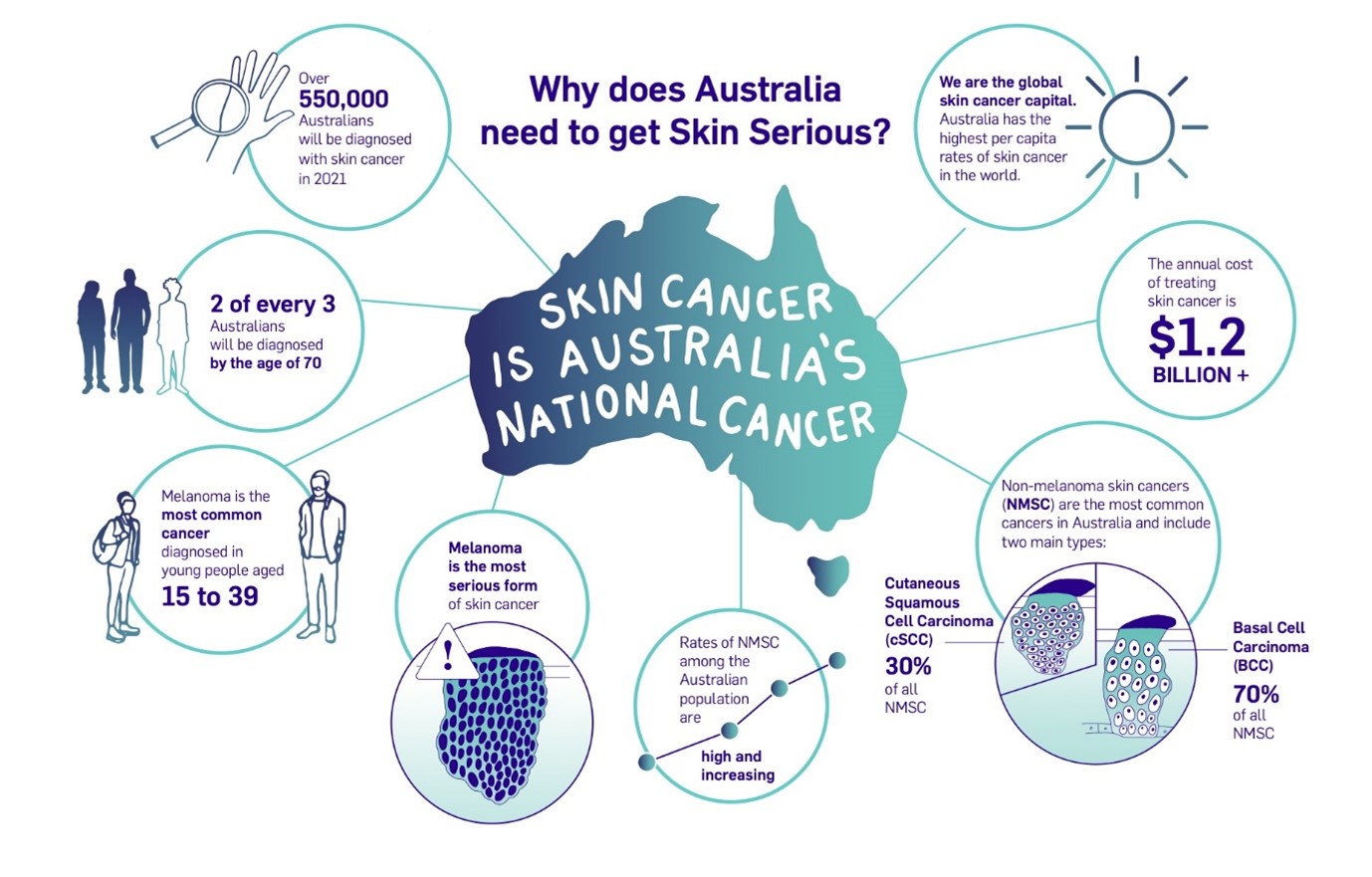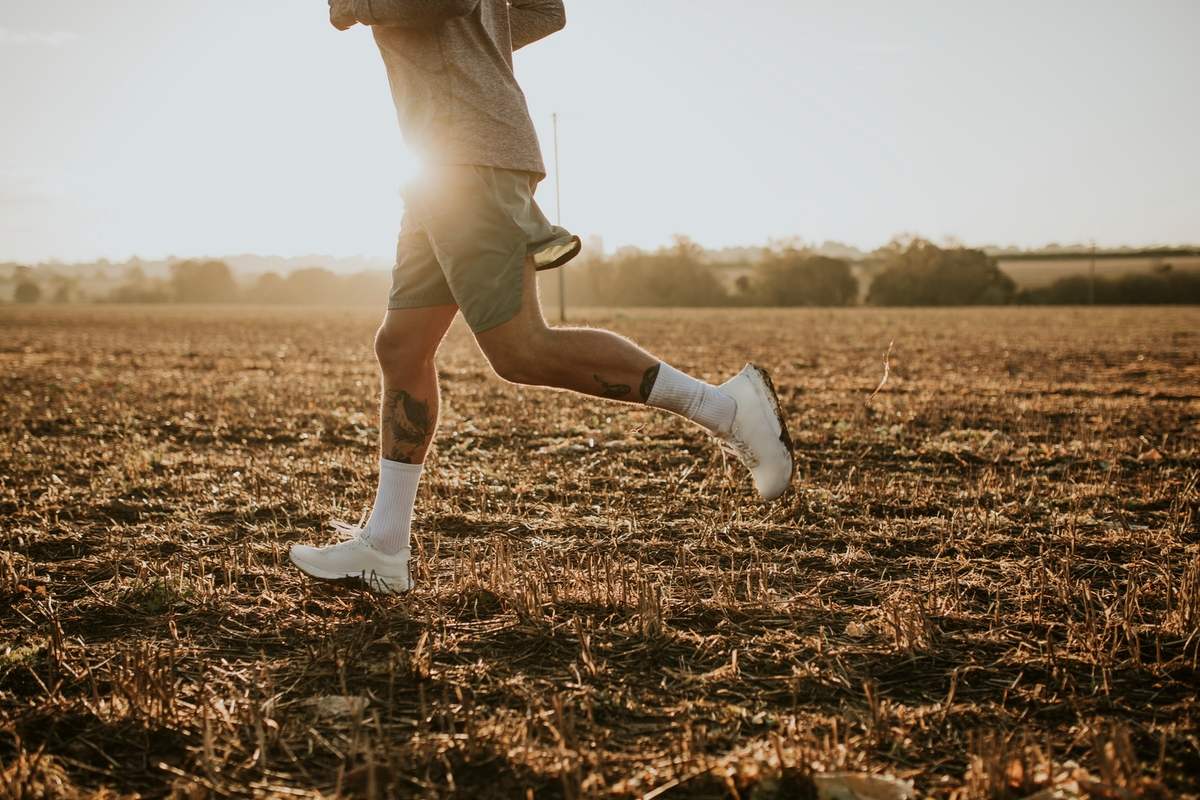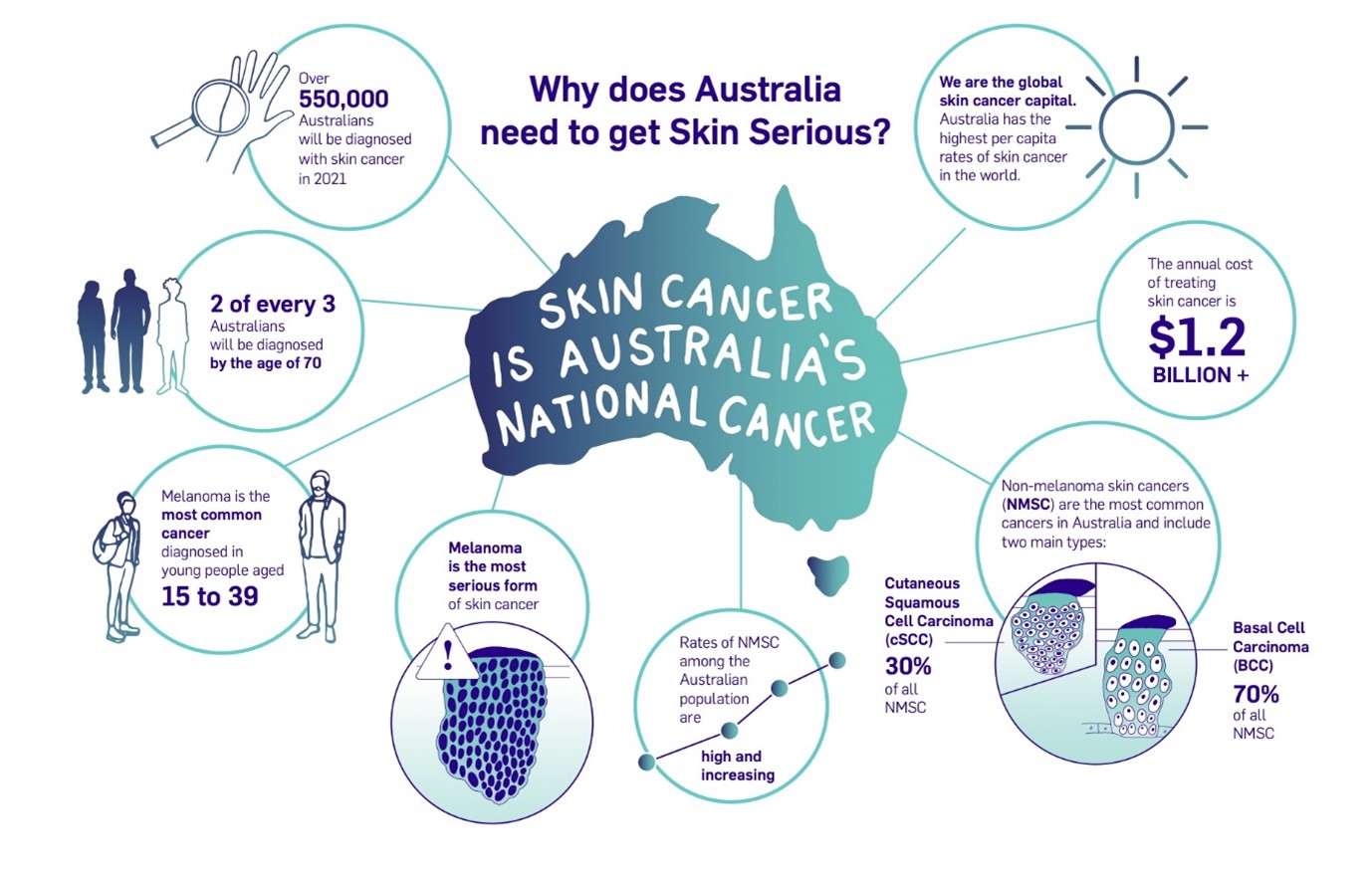Australia has the highest skin cancer rates in the world. This includes melanoma and non-melanoma skin cancer (basal cell carcinoma and squamous cell carcinoma). With summer approaching, more Aussies will be heading outdoors to exercise. So how can you protect yourself against skin cancer?
Two in three Aussies will be diagnosed with a skin cancer by the time they turn 70, so it’s something we all need to be aware of. Unfortunately, this is Australia’s national cancer.
Melanoma is the most serious type of skin cancer. In 2020 it was estimated that over 16,000 Aussies would be diagnosed with melanoma. That’s why Aussies need to get “skin serious”!

Source: MSCAN
What causes skin cancer?
The most common cause of skin cancer is damage to the skin from ultraviolet (UV) rays. Skin cancer, including melanoma, is most common in people who have experienced sunburn during childhood or who work extensively outdoors. It affects people of all colours and races, but people with lighter skin tone and those who burn more easily in the sun are at greater risk.
Importantly, the most preventable cause of skin cancer is overexposure to UV radiation. In other words, spending too much time outdoors when the UV Index is three or higher and not practicing sun (UV) safety when outdoors.
So, should I stop exercising outdoors?
While regular physical activity is associated with a reduced risk of most cancers, skin cancer is an exception. Some research has found that a range of athletes, including hikers, tennis players and runners, exceed the recommended ultraviolet exposure limit by up to eight times. This is especially true in the summer months.
Does that mean you should stop exercising outside? Absolutely NOT!
There are still heaps of benefits of exercising outside! Being outdoors can have a positive impact on your mental health, improve your mood and can help to boost your vitamin D levels.
The key is to make sure you’re sun safe while exercising outside.

How can you reduce your risk?
Thanks to campaigns like the “slip slop slap” campaign, skin cancer incidence in younger Australians are actually decreasing. For people aged less than 40 the incidence rate has dropped from a peak of 13 cases per 100,000 in 2002 to an estimated 9.4 per 100,000 in 2016.
We asked the Melanoma & Sk Advocacy Network (MSCAN) for their tips on reducing skin cancer risk, and here’s what they said:
Avoid peak UV times and seek shade
The sun’s UV rays are typically the strongest between 10am and 4pm. The risk of sun damage occurs when the UV level is forecast to be 3 or above, and the UV level changes throughout the day.
Check the UV level in your local area at the Bureau of Meteorology website, the SunSmart website or app. Limit exposure to the sun and stay in the shade as much as possible during these midday hours when the UV level is 3 or above.
Wear sun protective clothing, a broad-brimmed hat and sunnies
Clothes can provide great protection from the sun. Darker coloured clothing is typically more protective than lighter coloured and you may like to look for clothing that has a UPF rating.
Wearing a broad-brimmed (or legionnaire or bucket style) hat is also a great idea.
Sunglasses offer important protection, as UV light can have a harmful effect on the eyes and eyelids. It is possible to get a melanoma in the eye, called an ocular melanoma. There are Australian Standards for eye protection (AS/NZS1067), so choose category 2 or higher. These lenses absorb more than 95% of UV radiation (both UVA and UVB)
Sunscreen is your last line of defence
Sunscreen is important and is ideally used along with other sun protection (as outlined above).
Wear broad-spectrum sunscreen of SPF 30 or higher
SPF – Sun Protection Factor – indicates what percentage of the sun’s UV rays it can block. The higher the SPF rating of the sunscreen, the greater the percentage of harmful rays it can block.
“Broad-spectrum” refers to the fact that your sunscreen will protect your skin from both UVB and UVA rays from the sun.
Don’t forget to check the expiry date of your sunscreen.
Sunscreen that doesn’t show an expiry date has shelf life of no more than three years. This can be less if it’s been exposed to direct sun or excessive heat. Sunscreen should be stored below 30°C. It might be a bit old if it changes colour from white to yellow, changes in consistency, or starts to separate.

Lather up! And often! Even on cloudy days
Amazingly, most people only apply 25-50 percent of the recommended amount of sunscreen. It’s important to later a thick layer or you won’t get the full SPF protection stated on the label. Seven teaspoons of sunscreen is required to cover your whole body, and it’s best to apply it about 15 minutes before going in the sun. Remember to cover tricky spots – the tops of your ears, back of your neck, top of your feet and your scalp. Lip balm with SPF is a good idea too.
Many sunscreens aren’t as protective after two hours, and no sunscreen is waterproof or sweatproof. Sunscreen labels may say “water-resistant” which means they have been tested to be effective for up to 40 minutes of swimming. It’s important to reapply sunscreen immediately after swimming, sweating, or using a towel.
Remember that UV rays can be strong even on overcast days. Sun protection is required every day that the UV is 3 or above, even when it’s cloudy. Protecting yourself from the sun’s rays is important whenever you’re exercising outdoors.
Exercising after a skin cancer diagnosis
Research has shown that tailored exercise prescription can help with side effects of cancer treatment, especially fatigue associated with chemo and radiation. Being physically active before and after diagnosis can also help with treatment outcomes, quality of life and life expectancy.
To learn more about exercising during and after cancer treatment, download our FREE eBook.
,


